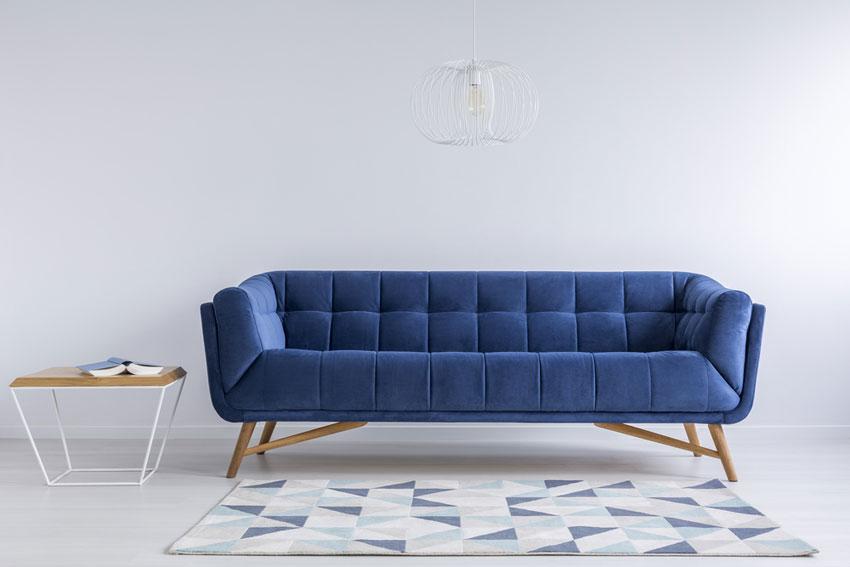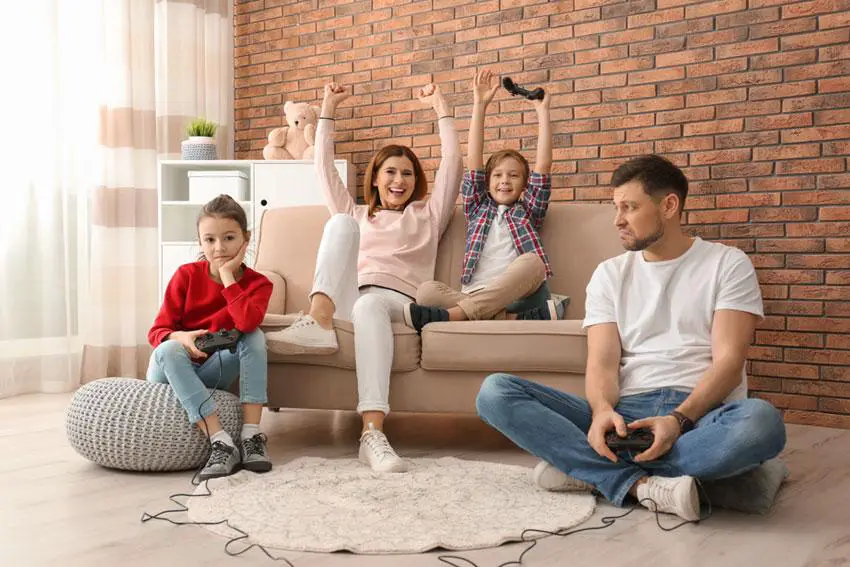The couch corner of the house is favorite to all of us. We can sit, take a power nap, even sometimes can have an overnight sleep there.
Both sitting and lying are comfortable on a balanced couch, but it becomes irritating when the couch keeps sliding from its position with a small push or inclination of the body.
A sliding couch is irritating, and it may damage your floor and carpet. Especially, if your floor is made of hardwood, sliding of the couch may leave scratches on the surface.
The reason behind sliding can be the flawless finishing of the floor or the grip-less couch legs. Whatever the reason is, the fortunate fact is you can solve this sliding problem in no time!
In this guideline content, we will help you to make your couch balanced on any type of surface. All of our solutions will be 100% floor friendly.

How to Keep Couch from Sliding: 6 Strategies
You can stop the sliding and make your couch stable on the ground in many ways, we discussed some of them here. We covered the cheap, easy, durable and aesthetic solutions. You can simply follow any of them considering your floor and couch’s bottom construction.
1. Rubber Pad
Rubber padding is one of the effective solutions to the sliding problem. You can simply make your couch and other furniture like chair, table, wardrobe stable on the gourd placing these rubber pads under the furniture legs. These pads are available in any home improvement store such as Lowe’s or Home Depot.
You can get various types of rubber pads, some can be used without glue or screws, and some requires screw or glue. Screw pads are a little bit expensive among all the rubber pads, but they are best in this field, once you install them with the legs, there is no chance of displacement.
However, whatever type of rubber pad you purchase, you have to be certain about the shape and size of your sofa’s legs before purchasing. The pads must fit tightly with the legs.
2. Hot Glue Padding
It’s an inexpensive yet effective solution to couch sliding. For this job, you have to buy a glue stick from the shop which will cost just a few bucks.
You need to turn around your sofa’s backside down and put off the couch legs. Now, wipe the legs with a cotton cloth to remove dust and dirt from there. Next, using the glue gun, apply the glue all over the bottom of each leg. When you are done with applying glue, keep the legs under the room temperature and wait for a couple of minutes. Finally, when the glue layer gets cold and solid, place the legs on their original position.
However, if your sofa’s legs are fixed, you have to apply glue keeping the sofa on the floor. In this situation, don’t apply glue to all the legs at once. First, lie the sofa backside down and apply to the front legs, then keep front side down and apply on the back legs.
3. Gasket Rubber Padding
It’s a kind of DIY sliding solution. Red gasket rubbers are usually used to create seals for plumbing applications, and they are sold in most hardware and home improvement stores. Usually, these sheets are available in packs of 6×6 inch squares. Purchase as many packs as you need, you can measure your need by the number of sofas you have.
Before placing these sheets underneath the couch, you have to resize them as per the size of your sofa legs. First, measure the legs, then draw an outline according to that measurement on the original sheet, and cut following the drawn line. Now, simply lift the furniture and place the measured sheets under legs, one by one.
4. Furniture Gripper
Furniture grippers are principally made for creating a stable connection between the floor and the furniture, they also work as a floor protector. If you want to upgrade from standard rubber pads, you can choose these grippers for the stability of your sofa.
These products come in different textured style and shape. Grippers are more expensive than rubber pads, but they are also more effective and last longer.
Like other furniture pads, grippers’ size and shape must be matched with the structure of the couch. The installation of the grippers is almost the same as the rubber pads. Once you placed them underneath the sofa, they will absorb the weight of the sofa and make their carrier stable on the ground.
5. Rug
A popular solution to the sliding problem is the installation of the rug. You can place a rug under the couch, the couch will not slide anymore. The use of rug for the better traction of furniture works best on the wooden floor.
Choosing rugs as a means of improving the balance of the furniture is a kind of aesthetic solution because rugs have brilliant designs that beautify their surroundings. They also work as a comfortable surface to walk on.
When you purchase rugs for your sofa, try to match them with your drawing room’s interior design. However, if your rugs begin to slide, you may also need to install non-slip pads under the rugs.
5. DIY Solution
You can use almost any piece of thin, durable and rubber material for creating some grip pads for your couch. A rubber kitchen drawer liner or a placemat can be used in a similar way that we have discussed for gasket rubber. But, don’t forget to cut the original mat according to the sofa’s leg size. Otherwise, it will be useless.
Moreover, covering each leg of the couch with the balloon is another cheap and easy solution to the couch sliding.

Additional Benefits of Installing Furniture Pads
All the pads that are used for preventing unintentional couch sliding also help the users to move the furniture smoothly when they have to do so.
- Pads protect the floor’s beauty.
- Couches or furniture with pads underneath their legs never make any harsh sound when you need to slide them for creating space.
Summing Up
Smooth and flawless finished floors beautify our houses, but this smoothness sometimes becomes the reason of not getting proper support and traction for the couch and other furniture. But, if you follow even one of the above-mentioned solutions, you can enjoy the beauty of your floor sitting or lying on you super balanced couch.
This is Autem Decker. Main Author of ‘TheHomeDigs‘. You may not find her on the list of top 10 contemporary Canadian interior designers, but everyone who knows her says she was born to be an interior designer.
She makes her plan in her head and draws them in her years-old diary with a note in the corner. The way she plays with color and shape amazes us.
Connect Her On – Twitter